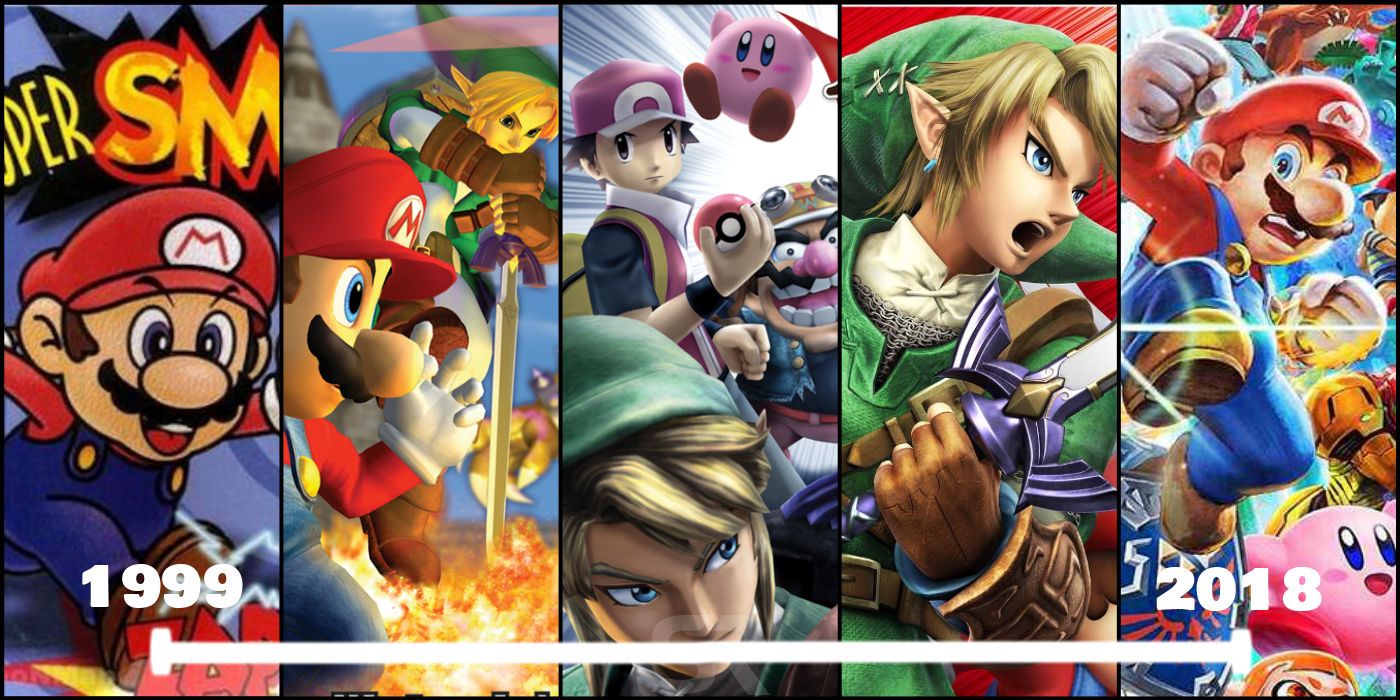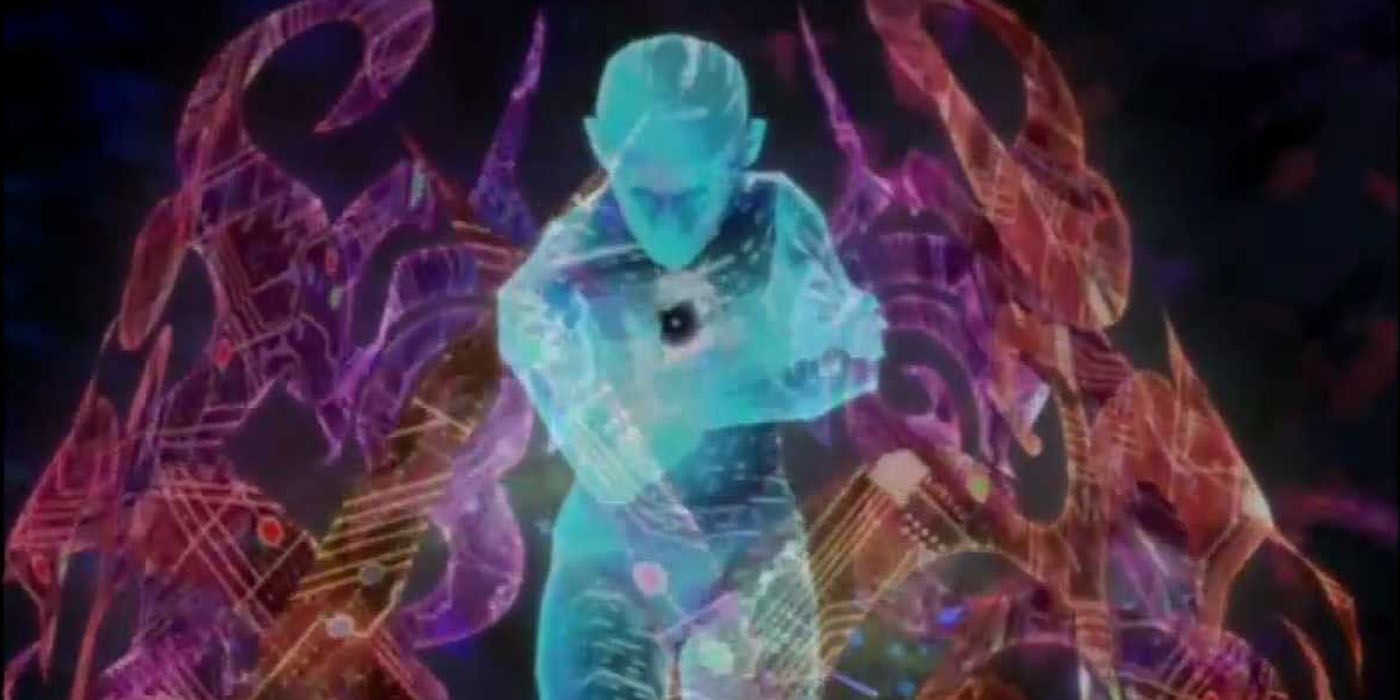
The appeal of Super Smash Bros. is immediately apparent for anyone with even a passing knowledge of the video game industry, but the franchise's lore and timeline can be a bit confusing. The focus of the series is to feature characters from throughout Nintendo's past (and more recently gaming history as a whole) in an all-out brawl to see who the strongest character is. While the fighting component is more obviously skewed towards bombarding consumers with crossovers, there's actually a timeline and lore associated with Super Smash Bros. that's often overlooked.
The premise of Super Smash Bros. itself is that each character is actually a toy, which explains why the franchise has focused so heavily on trophies in the past. These collectibles are brought to life by the imagination of a child, who is represented by the villainous (or perhaps just misunderstood) Master Hand. This is clear in the intro to the original Super Smash Bros. on Nintendo 64, where the hand can be seen picking up toy versions of the characters before bringing them to life in order to battle.
Related: Best Super Smash Bros. Ultimate Characters For Beginners
It's because of this that the Super Smash Bros. characters return to their toy forms (or trophies) once they have defeated Master Hand – because playtime has concluded. This premise is then presented in the introduction to Smash 64's sequel on the Gamecube, Melee. It starts with a figurine of Mario being thrown into an arena before coming to life and doing battle with The Legend of Zelda's Link. These toys are once again being brought to life through the power of imagination. This theme was confirmed by Nintendo's late President Satoru Iwata in a 2015 interview with TIME:
“What’s interesting about the Smash Bros. games, is that the Smash Bros. games do not represent the Nintendo characters fighting against one another, they actually represent toys of Nintendo characters getting into an imaginary battle amongst themselves. And frankly that has to do with a very serious debate that we had within the company back then, which was, ‘Is it really okay for Nintendo characters to be hitting other Nintendo characters? Is it okay for Mario to be hitting Pikachu?’”
Despite the child-friendly nature of this premise, things took a drastic change in tone with the arrival of Super Smash Bros. Brawl on the Nintendo Wii in 2008. This game featured a brand-new story mode known as Subspace Emissary that tied all of the characters (or at least most of them) together into a single narrative. Featuring a number of dream team-ups and more, it delivered something unlike anything seen in the series before.

All of the villains from Nintendo's most decorated franchises were featured and transforming the heroes of the world of Smash into statues – presumably never to be brought back to life again. After being lead to believe that the villain behind this plan is none other than Master Hand, players are thrown a curveball when they realize that the long-standing final boss is actually being manipulated by a villain called Tabuu.
Now, the name of this villain actually gives away its intent, and the fact that it is controlling Master Hand (the creator of this fantastic, crossover-centric world) is because it is cultural norms dictating that you aren't able to play with your toys anymore – it's taboo. These societal pressures to move on from the toys and characters gamers love is the true villain of the Super Smash Bros. series. Ultimately, Tabuu is defeated and all of the fighters are then free to go on simply existing. Standing on the edge of a cliff and looking out over the ocean is how the game opts to end the story – landing on a happier note for the characters in this world.
Related: Tips & Hints For Playing Super Smash Bros. Ultimate
Super Smash Bros. for Nintendo 3DS/Wii U does have some narrative elements that tie into the creative process, namely being consumed by darkness. This theme is speculated to be on franchise creator Sakurai's own struggles with being unable to move on to a new project, although this has never been confirmed by Nintendo – and presumably never will be.
The story explored by Brawl is then picked up again in Super Smash Bros. Ultimate through the game's World of Light campaign. From here players witness the obliteration of the entire cast of characters at the hands (wings?) of Galeem – including Smash newcomer King K. Rool – with the sole survivor being none other than Kirby. The iconic star warrior then returns to the scene of this destruction after barely escaping with his life and sets off to free the handful of his friends that were spared and save the Spirits of everyone else that wasn't. Here's a breakdown of the games:
- Super Smash Bros. (1999)
- Super Smash Bros. Melee (2001)
- Super Smash Bros. Brawl (2008)
- Super Smash Bros. for Nintendo 3DS and Wii U (2014)
- Super Smash Bros. Ultimate (2018)
That wraps up the timeline and lore leading up to the events of Super Smash Bros. Ultimate. The above cinematic is what kicks off the adventure in Nintendo's latest iteration of the franchise, but it doesn't end there. Even more characters are joining the fray as downloadable content, meaning that they too survived the catastrophic events of this event. The first new character will be Piranha Plant, which arrives in February 2019, while Persona 5's Joker will join Super Smash Bros. Ultimate by the time 2019 will have wrapped. Which other characters will receive invitations to the fray and survive the cataclysm? Fans will know soon enough.
More: Super Smash Bros. Ultimate: Top 10 Characters We Want as DLC
from ScreenRant - Feed https://ift.tt/2LeSRJu


0 Comments